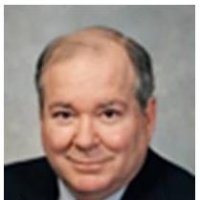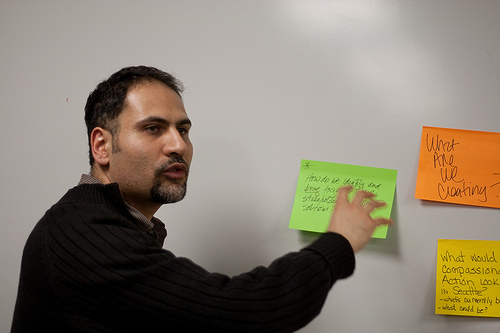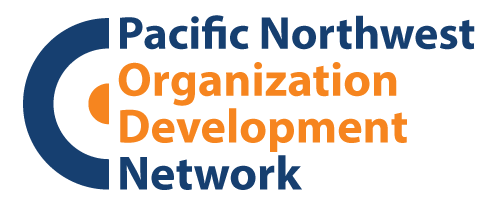February 2017
|
 From the President: From the President:
CHANGE AND ITS DISCONTENTS
I am hardly the first or only person to wish good riddance to 2016, a truly awful year in many ways for American society and much of the rest of the advanced industrial world. What contributed to last year’s anxious and dyspeptic spirit was, among other things, a rejection by many people of a more integrated world, the denial of science and even basic facts in the face of a looming ecological catastrophe, and the casting aside of traditional norms of civility.
So how do I square this bleak assessment with my modestly upbeat perspective in last month’s column? This is a topic worth exploring, because I believe it shines some light on the current challenges to our profession and compels us to the hard thinking we need to undertake to find the way forward.
My upbeat assessment last month was about PNODN as an organization. We scored some real successes and laid plans to do even better this year. Similarly, many of you are doing great work in service to various organizations to operate leaner and be more resilient in the face of change.
While we can be proud of how as professionals we have helped to optimize the future for the organizations we serve through planned change and learning, we need to bear in mind that many of our fellow citizens have been hurt badly by workplaces in the throes of radical transformation. These folks have been left out of the economic recovery. They have been left behind by the continuing creative destruction caused by automation and globalization. As the result of the last election cycle, we all surely know by now that there are many angry, discontented people out there who feel their prospects for a better life, along with those of their children, are diminishing.
The OD community needs to be leading the discussion on a huge question, namely, what is the future of work? As automation eliminates more and more jobs, how are people going to earn a living and find a purpose for their lives?
There are subsidiary questions as well. What sort of help should be provided to those whose career field has been eliminated to transition into whatever new work is available? What responsibility do organizations have to the larger society to help address these issues?
Dov Seidman, CEO of the consulting company LRN, offers what is a promising early perspective. Featured in New York Times op-ed columnist Thomas Friedman’s recent column, Seidman’s thesis is that “Economies get labeled according to the predominant way people create value … . ‘So, the industrial economy’ [Siedman says] ‘was about hired hands. The knowledge economy was about hired heads. The technology revolution is thrusting us into “the human economy,” which will be more about creating value with hired hearts — all the attributes that can’t be programmed into software, like passion, character and collaborative spirit.’”
This should be fertile ground for the OD profession, if Seidman is right. We have always been about collaboration and bringing human feeling into the workplace. But getting from where we are now to a new future is certain to be a long road, and probably a bumpy one as well. There is a lot of discontent out there, and a lot of people who need to feel some heart from others right now.
Dr. William “Bud” Wurtz
2016 PNODN President
|
|

Immunity to Change with Mo Raei on February 27th
Traditional change management and self-help tools focus on changing negative behaviors. The assumptions being that it is easy to change behavior. However, because these behaviors serve a protective mechanism, they are very likely to come back in one form or another. Additionally, new behaviors might spring up to restore the dynamic equilibrium.
To overcome the hidden dynamic, the Immunity Mapping process will assist you in identify your competing commitments, dig deeper and find the underlying assumptions behind these commitments. Only when you unearth your big assumptions, can you engage in changing behaviors. The Immunity to change process was developed over 15 years ago by Robert Kegan and Lisa Lahey at Harvard University. It was successfully applied with thousands of individuals. It is a powerful intervention for creating movement in change efforts and for the adult development required for transformational change leadership.

_____________________________________________________________________________
Review of December Meeting: "History of OD"
by Jeremy Meeds, Program Director
During our December meeting entitled 'The History of OD', we were blessed to have Sam Magill facilitate a conversation with some of the biggest names in the OD field. Sam started by having all of us place how long we had been in the OD field on a flip chart, and then, in fish bowl style, he started having a conversation with those who had been in the field the longest, all the way up to those who had just entered the field recently, allowing this inner circle to grow as we went. This fascinating and enlightening conversation started very small. Initially, We were regaled with stories from Geoff Bellman and Steve Kato and Sam. We learned how Geoff kind of made his own way at the beginning and how Steve learned how to tune in to what the client needed. We also learned about Sam's 'spiritual experience' with a group that was similar to T-groups which turned his poor job review around to help him become the leader, facilitator and coach that he is today. The fish bowl was soon joined by many others, including Kathy Ryan and Eric Svaren and many others. The stories we shared with each other were wonderful, and Sam did an excellent job facilitating the conversation. From my perspective, everyone seemed to leave energized by the conversation, and it was a great way to kick off the holiday season by celebrating our OD history!
| |
Case Study

Savy Slips, Learning on the Run
By Philip S. Heller
Learnings from Practice 22: Building Team Consensus Decision Making
How to improve a team’s consensus process while solving a concrete problem?
The Request. The Director of a Regional Forestry R&D Center requested help in developing a 5 year strategic plan, something that the Center had not created before. The Center Director wanted her leadership team to function as a policy making body, formulating center-wide priorities and polices that would best serve the interests of the Center as a whole. She wanted her direct reports to function as a unified board of directors.
Larger Context. The R & D center was divided into different divisions that represented different aspects of forest management and research – Forest Management Systems, Remote Data Sensing, Riparian Restoration, Forest Recreation, Forest Pest Research, Fire Control Strategies, Ecosystem Assessment and Wildlife Biology. The Division Directors and their deputies operated nearly independently of each other. There was even some competition among them for the Center’s discretionary funds and available FTE positions. All of these Divisions had “soft” grant money earmarked for particular issues. When they did meet infrequently as a team, they continued in their roles as heads of independent organizations and had difficulty taking a Center-wide perspective. Also, the Division Directors were renowned researchers and would lapse into long involved debates and would use questions to signal their interests.
Consulting Intervention. We developed three multi-day workshops to help the Directors and their Deputies develop and implement a process to set priorities and develop a 5 year cohesive research agenda. At the start, the Center Director set a groundrule that consensus would be the preferred method for team decision making. She also noted that if after several attempts, no consensus emerged, than she and her Deputy would make the decision as to next steps. We took on a developmental facilitation role (1) helping the team take responsibility for improving their decision process together. During the initial workshop, we pointed out the behavioral signals for a consensus process (2). Also, the team gave written feedback at the end of each day including how to extend or expand their process learnings for the following day (3). As decisions were being made, we pointed out learning moments as positive examples of consensus and helped them continually add new guidelines and tools that the team might find useful (4).
Last line: if one of the tasks of a senior leadership team is to improve their decision making together, it is helpful if they understand the behavioral cues that signal an effective consensus process.
(1) For more information on developmental facilitation, see: Schwarz, R. M., The Skilled Facilitator. Jossey-Bass Publishers, San Francisco. 1994.
(2) For our behavioral definition of consensus, go to: http://learningdesigna.com/resourcescategory/team-problem-solving-development/ and select Consensus Defined.
(3) To access a process feedback tool we have used, go to: http://learningdesigna.com/resourcescategory/team-problem-solving-development/ and select Feedback for Team Development.
(4) To access a straw-vote tool we have used, go to: http://learningdesigna.com/resourcescategory/team-problem-solving-development/ and select Consensus Scale 1-5 Fingers.
Philip Heller is a senior associate of Learning Design Associates. For 36 years he has helped plan systems change and develop leaders in government, community agencies, and health care centers. Philip received his Ph.D. in Education focusing on learning and problem solving. As part of the originating group, he has been a PNODN member since 1982.
© 2017 Philip S. Heller, Savy Slips, Learning on the Run 22, Building Team Consensus Decision Making
|
|
|
|
Of Interest
Allied Professionals Networking Event February 1
Moderated by Margo Myers, Executive Coach and Former TV Anchor, this will be an opportunity for you to participate in cross-field networking. Whether you are a coach, HR professional, learning & development expert or OD practitioner this event is for you.
During the evening, we will conduct a serious discussion with Q&A about our value and impact for business with our distinguished panelists. There will also be good food, drink, and an opportunity to meet with fellow professionals.
Don't miss out, space is limited!
Register here for the Allied Professionals Networking event at Mt. Baker Community Center on Wednesday, February 1, from 6-9 p.m.
LWHRA 2017 Symposium
The 2017 LWHRA Symposium on Februray 14th will help HR professionals to build effective skills for career growth.
Feel the HR LOVE by:
Growing your leadership capabilities and the emerging leaders at your organization
Gaining the skills to meet your professional objectives
Becoming a business partner who can shape and communicate the vision of your organization
Learning how to empower yourself and others through shared understanding
Attend informative sessions by dynamic speakers who will provide different perspectives, techniques, experiences, and knowledge to reinforce your LOVE of HR. Registration and details can be found here.
|
HOW TO REACH US
Our Administrator is: Ann M. Baus

The Editor of the newsletter is David C. Wigglesworth
From The Editor
This is your newsletter and we welcome and encourage your contributions. They could include personal news of a professional achievement, a brief article of interest, a short book review, a case study, a cartoon, a joke that is OD relevant and/or anything else that might be of interest to your colleagues who are our readers. I thank you in advance.
|
|
|
|
|



